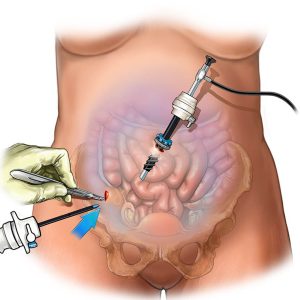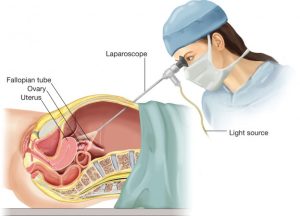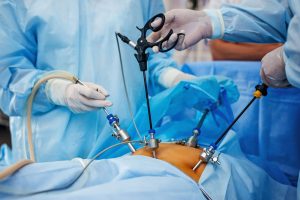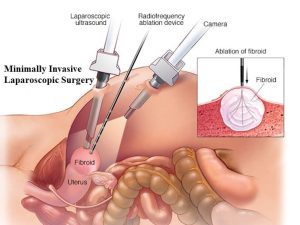Gynaec laparoscopic Surgeon in Aundh - Dr. Renuka Laturkar
Dr. Renuka Laturkar is a highly skilled gynecological laparoscopic surgeon based in Aundh. With an impressive medical background, including an M.B.B.S. degree and a D.N.B. specialization, Dr. Laturkar possesses extensive knowledge and expertise in the field. She is known for her proficiency in performing laparoscopic surgeries, a minimally invasive surgical technique used to diagnose and treat various gynecological conditions. Dr. Renuka Laturkar’s dedication to providing exceptional patient care, coupled with her advanced surgical skills, makes her a trusted and sought-after gynecological laparoscopic surgeon in Aundh.
Gynaec laparoscopic Surgeon in Aundh
A device with a camera and light connected to its end is used by surgeons during laparoscopy, a minimally invasive surgical technique, to examine the organs. Laparoscopic surgery can be used for both diagnostic and remedial purposes in the treatment of infertility.
Bliss women’s care clinic hospital is unquestionably a great option if you’re looking for the best laparoscopic surgery in Aundh. One of the top IVF facilities in Aundh Pune is Bliss Women’s care clinic, which offers the most cutting-edge and affordable gynecological and assisted reproductive procedures, including IUI, IVF, ICSI, donor sperm, egg, etc.

Let's learn more about laparoscopic surgery first
Laparoscopy is a surgical procedure that makes use of a laparoscope. Examining the patient’s stomach and pelvic areas is a diagnostic technique.
A high-resolution camera is inserted through a tiny tube during laparoscopy so the doctor can clearly see the abnormalities inside. The doctor is able to immediately diagnose the problem and carry out an operation because of this real-time vision of the pelvic area.
Uncomplicated laparoscopic surgeries typically last between 30 and 60 minutes, and the patient can leave the hospital within a few hours.
When Should You Consider a Laparoscopy?
Laparoscopic surgery is advised by specialists to identify and treat the following conditions:
1.Pelvic pain or mass development
2.abnormal fluid buildup in the pelvic area
3.inability to get pregnant
4.pregnancy in the tub
5.ovarian tumour or cyst
6.pelvic infection-related scarring
Let's now talk about the Laparoscopic Surgery Process:
1. Diagnosis
The patient will be asked to undergo a number of tests, including an electrocardiogram, chest X-ray, CT scan, blood analysis, and urine. These will enable the doctor to do a thorough analysis of the issue.
The degree of severity is assessed with an ultrasound or CT scan. These diagnostics can be used by the surgeon to decide where to insert the needle during the operation. It is also referred to as CT- or ultrasound-guided needle biopsy.


2. Medicine
Sedatives or anaesthesia are then administered to the patient prior to the procedure. Typically, general anaesthesia is given by surgeons to the patient so that they can keep them unconscious during the procedure.
3. Surgical Planning
A breathing tube is inserted down the patient’s throat prior to the procedure and during the sedation process in case the patient’s windpipe should collapse due to the anaesthetics’ effects.
A catheter is also inserted into the bladder of the urinary system. A catheter is a flexible, hollow tube used to drain fluids into a bag. During surgery, the catheter aids in draining the bladder.


4.Surgery
A 1 to 1.5 cm-long incision is made in the area of the underbelly by the surgeon. Additionally, the surgeon places a trocar—a hollow needle or tube—into the incision. The pelvic region is then inflated with carbon dioxide gas through the trocar, making it easier for the surgeon to operate on and observe inside.
Last but not least, the surgeon inserts a laparoscope—a tiny camera—down the trocar to view the pelvic area. To have a better view of the interior organs, the surgeon may make a few additional incisions if necessary.
A dye may be injected into the cervix during gynecologic laparoscopy so the surgeon may plainly see the fallopian tubes.

